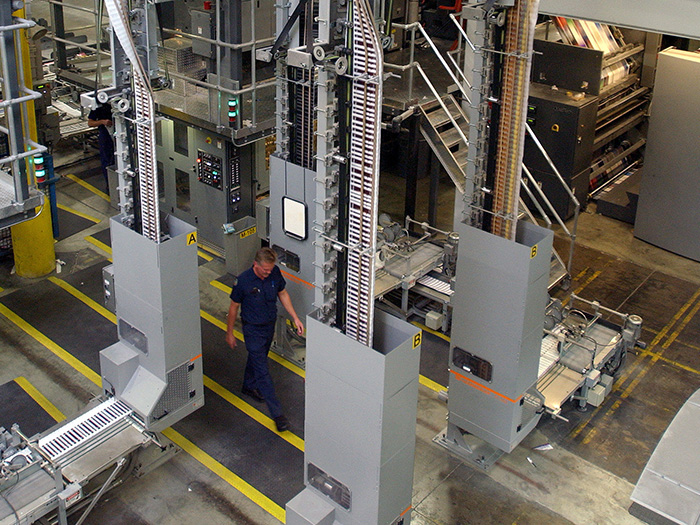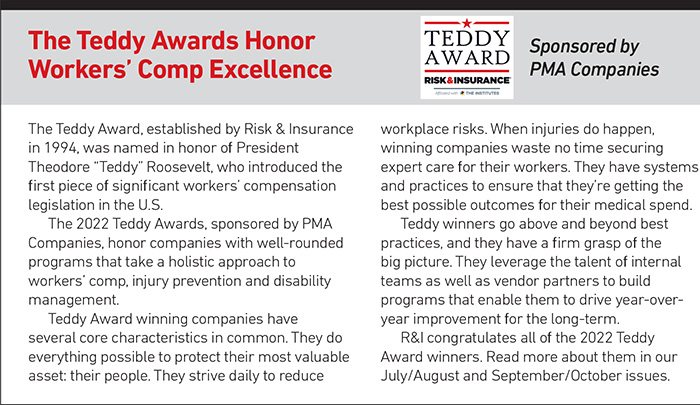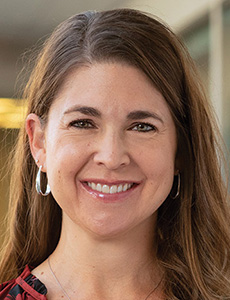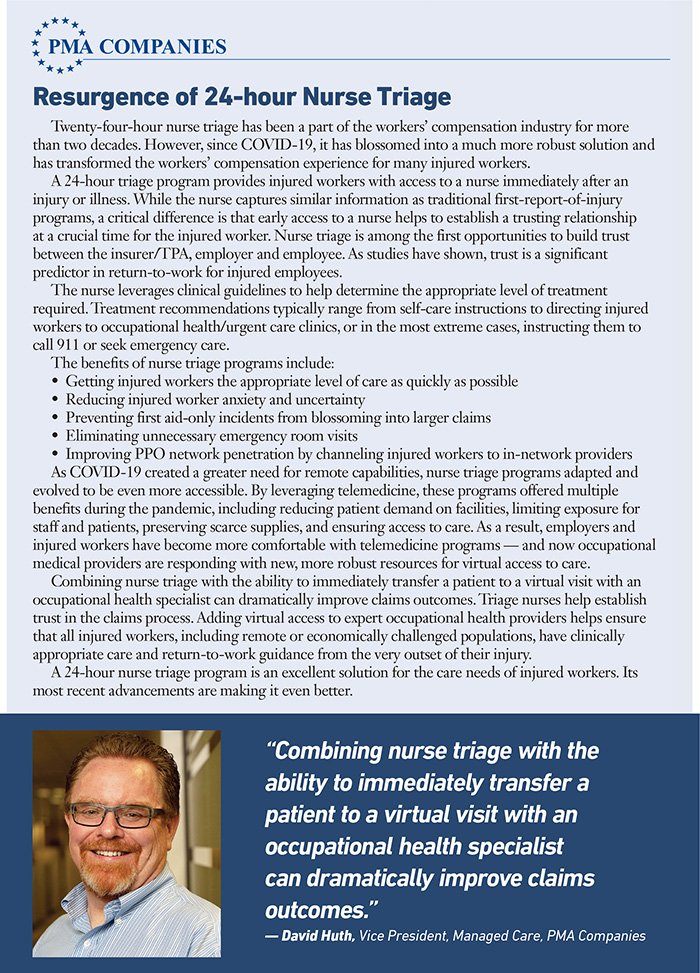Relieving Aches, Running Marathons: How This Teddy Award-Winner Improved Resilience with Athletic Training

For more than 50 years, Quad has continually sought “a better way” — not only in the services it provides to clients but in how it cares for the health and wellbeing of its more than 15,000 workers.
Founded as a magazine and catalog printer in 1971, Quad has evolved into a global marketing experience company with an integrated platform.
With dozens of printing facilities — some measuring more than one million square feet and employing thousands of people — the company ranks among the largest U.S. commercial printers. In fact, the print edition of Risk & Insurance® is produced in a Quad facility.
“We take our commitment to creating ‘a better way’ seriously and work hard to create an environment where our employees feel empowered to address and correct safety concerns or unsafe behaviors,” said Natalie Hahlen, Quad’s director of environmental health and safety.
Quad has a long-standing, proactive, successful program for ergonomic training and safety hazards identification. Nevertheless, it saw an opportunity to do more.
“Manufacturing is part of our operations, so, unfortunately, we try to combat turnover as much as possible, but we do have turnover — especially in the entry-level positions,” Hahlen said.
Although the company has invested heavily in automation throughout its facilities to minimize the physical load placed on workers, depending on the size of production orders, many tasks simply must be handled manually, Hahlen explained. That means finding a way to prevent sprains and strains.
Well before the pandemic increased staffing pressures, Hahlen’s team looked at its 2016 OSHA DART rate of 2.33 and decided to completely modify the company’s ergonomic program and develop what has become Quad’s “Healthy Workforce and Occupational Health Program.”
“We [were] very proud of our overall ergonomics program but knew we needed to take some additional steps to try to get in front of all of our employees on the manufacturing floor, work with new employees, and just make sure that we were able to take care of them,” Hahlen said.
“For us it was stepping back and determining where our injuries are happening. And then we really went outside the box.”
After reading an article about an airplane manufacturer that brought industrial athletic trainers (IATs) onto their floors, Hahlen’s team thought, “Maybe this will work for us?”
As trained health care professionals, athletic trainers specialize in the prevention, examination, diagnosis, treatment and rehabilitation of emergent, acute or chronic injuries. Their unique education in kinesiology is something that Hahlen thought could make them effective in conducting ergonomic evaluations and instructing staff on how to prevent repetitive stressors to the body.
“The IATs can apply the same injury prevention principles used with sports athletes to the industrial athlete,” Hahlen said, “focusing on body mechanics, postural concerns, overexertion and fatigue, which are physical stressors that tend to lead to a musculoskeletal (MSD) injury.”
Receiving the green light from Quad’s executives, Hahlen’s team found an expert to support them in building the framework to incorporate industrial athletic trainers into the evolving Healthy Workforce and Occupational Health Program.
Beginning with select facilities in Wisconsin and West Virginia — more recently adding an IAT in its upstate New York plant — Quad has introduced industrial athletic trainers into its manufacturing environment, building rapport with leadership and gaining employees’ trust little by little.
At first, many employees were hesitant to meet with the IATs, because they didn’t understand the role in a manufacturing setting. However, as employees began seeking guidance from the IATs and experiencing almost immediate improvement with longstanding aches and pains, word spread.
With many of the production staff working 12-hour shifts, “it’s important for them to know that they don’t have to work through muscle soreness,” Hahlen said. “They don’t have to make an appointment either. They can just walk right off the production floor to meet with an athletic trainer, or the athletic trainers walk around [and] the employees can stop them and discuss their needs right on the production floor.”
Having completely embraced and utilized the IAT program, Quad’s Lomira, Wis. plant has seen very positive results. Prior to the 2017 IAT rollout, the plant averaged 102 claims per year for the prior three years. In 2021, the plant had just 49 claims following 181 incidents with 110 of those following up with IATs, and 34 utilizing telehealth.
In 2021, three IATs worked with 186 employees who felt some form of discomfort related to work activities, and only 36 had to seek outside medical treatment. They also worked with 381 employees (up from 293 employees in 2020) on non-work-related incidents, with only 40 having to seek outside medical treatment.
“If we’re seeing more incidents, but the severity of those incidents is down, that’s success for us,” Hahlen said. “This reduction in claim volume has reduced our annual actuarial incurred loss estimates by 57%, which frees up cash for other improvements such as automation, [and] enhancements to the safety program.”
Quad has also seen a steady decline in its DART rate as the Healthy Workforce and Occupational Health Program has grown to include IATs over the last four years. By 2021, its DART rate had declined to 1.51.
Improving Quality of Life Among Staff
Industrial athletic trainers have become central health and wellness figures among the Quad team. By addressing physical stressors on the production floor and attending to long-standing discomforts that have made it difficult for Quad’s staff to comfortably do their jobs, the IATs have cultivated a loyal following.
One IAT shared the story of an employee he’d helped become a distance runner: “He came to me a while ago, inspired by his neighbor, who is an 80-year-old marathon runner. He noticed how healthy and driven his neighbor was and felt that he wanted to get back into running to further pursue a healthy lifestyle,” the IAT wrote in Quad’s Teddy award submission.
“Of course, picking up routine running came with some challenges. He stopped in my office for some lower extremity irritation that was occurring during running. I noted that a replacement OTC orthotic would assist with this issue.
“Even though this was a simple fix, his discomfort never returned, and he now is a routine long-distance runner, competing in half marathons and routine 5Ks. It’s awesome to see how simple, onsite first aid can improve a person’s quality of life.”
Hahlen sees the industrial athletic trainers reinforcing new, healthier manufacturing cultural norms: “For so long employees thought ‘I’ll just work through [the discomfort].’ That is not our philosophy.
“We’re very upfront: As soon as it hurts, you need to let us know so that we can get you to the best care possible, whether that’s an offsite physician or working with our athletic trainers. That’s where we’ve seen the most benefit to our program.”
Mini Ergonomic Audits
As an extension of its goal to identify near misses and proactively identify potential hazards on the manufacturing floor, Quad has begun engaging staff in ergonomic quick audits.
“Instead of an incident occurring or someone recognizing an opportunity on the ergonomic side, it’s a real quick five-minute process to evaluate a job or task — see if we can improve it,” Hahlen explained.
Making sure plants complete at least two ergo quick audits each month allows for teams to get in front of potential issues, Hahlen said, and identify ergonomic opportunities to implement across all locations.
“The safety and health team meets monthly to review all those quick ergo audits. Whatever we do to potentially change a process, we send out what’s called an ‘ergo alert’ to all locations,” she said.
Patience and Creativity Are Key to Change
Cultivating a safety culture that prioritizes preventive action has taken time.
“A lot of times people who are in the safety and health field want that instant gratification. So, you do have to be a bit patient. It’s just being a little creative with how you manage your programs,” Hahlen said.
“I always challenge my group, ‘Let’s think outside the box,’ because usually what’s inside the box we’ve already tried. So, let’s really think, and the outside-the-box ideas tend to work the best,” Hahlen said. &
Representatives from all of this year’s Teddy Award winners will gather in October at National Comp 2022 for a special Q&A presentation. Meet the winners and learn more about their programs.













